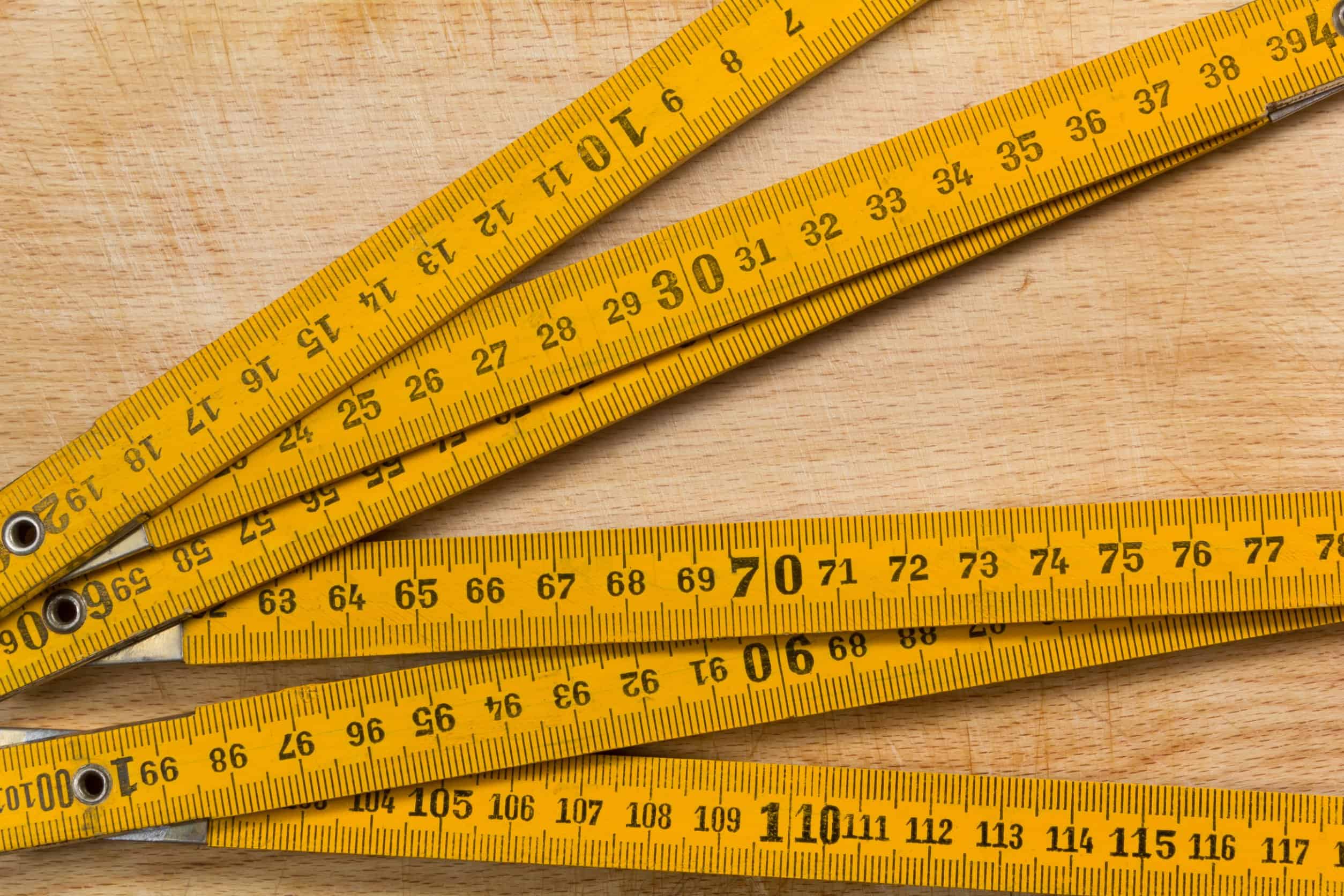Figuring out the right size for an office desk is more than just style. The desk size needs to be compatible with the size of your space, but also with how you usually use your desk for work.
Whether you’re building an office space from scratch or upgrading your existing setup, you need to know how to measure a desk, as this information is essential for proper space planning.
With this guide, our main goal is to make the desk buying process as smooth as possible for you by explaining how to measure a desk and giving you some useful tips to make sure you do everything correctly.

What Desk Measurements Are and How They Work?
The first step of learning how to measure a desk is to make sure you fully understand the standard units used for office furniture measurement. They are width, height, and depth (W x H x D). Following the industry standard, these measurements are commonly displayed in a fixed order where width is first, height is second, and depth is first. To give you an example, for desks you might see 6.93 x 3.78 x 3.7 (in inches) or 1600 x 730 x 600 (in millimeters).
Width (W) is the measurement from left to right if you are observing the table from the same perspective as you would when you are sitting at it.
Height (H) stands for the measurement of size from top to bottom. It’s usually standard, meaning that office desks do not vary too much among each other when it comes to height.
Depth (D) is the measurement that tells us how far back the furniture piece goes. It’s measured from front to back if you are observing the table in the same manner (as if you’re sitting at it).
These three measurements are very important to have in mind when purchasing a desk online, when eyeing a piece in a furniture store, or when taking measurements of the space you plan to place the desk in.
What Is the Optimal Desk Height?
The optimal height of the desk depends on how tall you are. Usually, for people who are 5 – 6 feet tall, the optimal office desk height should be between 28 and 30 inches.
The height measurement works a bit differently if you’re looking for a standing desk. If you’re buying a static standing desk, its height should be fine-tuned to yours. For a 5,9 feet tall person, a 3,6 feet tall desk is an ideal option. To calculate the perfect desk height given your height, try out this multi-purpose calculator, where you simply need to insert your height in centimeters, and it will output your optimal office desk height.
What Is the Optimal Desk Width?
While desk height is important for optimizing the table to comfortably suit your own body measurements, width and depth are important for optimal space planning. Usually, office desks are between 24 and 78 inches wide.
Going below 24 inches will make it quite difficult to actually use the desk, as it won’t be able to take much more than your laptop. However, if you really can’t fit a wider desk, you may want to add a filing cabinet, drawers, shelves, or some kind of storage pedestal on the side, where you will be able to put your working equipment.
The optimal office desk width if you’re working with a standard PC and you have a moderate level of desk crowding in the plan (notebook or two, pencil, charger, and desk lamp) is between 40 and 50 inches.
What Is the Optimal Desk Depth?
Many people neglect the importance of depth when taking measures for their office desks. As a result, they end up being unable to open or close the door to the room, or unable to place all of their essentials on the desk the way they have imagined.
To avoid this, you want to make sure that your desk’s width is between 18 and 30 inches. Of course, it should primarily meet the demands of your space.
If your work involves using a computer, especially a larger PC (compared to a laptop), desks that go above 30 inches in depth are an optimal choice. With more than 30 inches in depth, you’ll be able to also fit a separate keyboard, mouse, monitor, and even some paperwork, if needed.
If you decide to attach any additions to the office desk, such as the drawers, shelves, or storage space, make sure that the depth is aligned and matching the depth of the table.
Minimum Office Desk Dimensions
Small spaces present a particular challenge when it comes to space planning and choosing your office desk dimensions. If you are dealing with a small space, your best choice is to go with a desk with the smallest functional dimensions, and then add additional surfaces and storage such as wall shelves, below-desk storage space, etc.
Minimum office desk dimensions that work well for most people are:
- Width: 24 inches;
- Height: 28 inches;
- Depth: 18 inches.
If you’re dealing with a small space, begin with these dimensions. Try to measure where the desk of these dimensions would be best placed using a metric tape, and how many of the most essential items you use for work would fit on it.
If you estimate that a larger desk would fit without problems, even better. Sometimes, it’s possible to get more desk space if we compromise on shape, and opt for an angular L-shaped desk, for example. In that case, you should clearly define all three measures (though height will likely be the same) for both prongs of the desk.
Questions You Need to Consider When Measuring Desks
Now that you better understand how to measure a desk, it’s time to see what the market has to offer. But, before you make any final decisions, here is a review of the most important questions related to desk size.
- What is your total available space? The amount of space in your room will determine your desk size. You can go around it to some extent by either compromising on the shape of it or adding elements like shelves, drawers, or storage.
- How do you use the desk? What you do on the desk and your daily workload are important factors for determining what desk size you need.
- What is your chair size? Ergonomic office chairs tend to be bulky, and you need to take them into consideration when planning desk depth and width
- What desk shape do you want? Are you willing to work at an angular L-shaped desk or do you prefer a regular rectangular desk shape?
- Do you want a standing or a sitting desk? As mentioned already, this “tiny” detail can change everything when it comes to desk dimensions., because the height of a standing desk is significantly different from the sitting one. Also, do you want a static or dynamic standing desk? Static standing desks can’t change their height, you can only interchange with sitting if you have a tall chair that fits the desk height, while the dynamic ones have a mechanism that allows you to shift the desk height from sitting to standing.
- How much money are you willing to spend? Bigger budget usually means more perks and features. For example, a simple small-sized desk that costs between $40 and $90 can have foldable additional plates for an additional $20 to $50, which can save you in more demanding situations workload-wise, and when you’re done with them, you simply fold them back into the table.
- Are you willing to add other assisting elements? If you’re willing to add shelves, drawers, or additional storage spaces, a small-surface desk should cover your needs, even if you need a full-blown PC and two monitors.
Conclusion
Measuring a desk is fairly simple. You need to take three measures into account, and those are width, height, and length (W x H x D). Think how a desk with specific measurements in all three units would fit in the space where you plan to put your desk. But, if things don’t work out as you imagined them, keep in mind that you can always make an L-shaped desk and fit it into the angle of the room, or pick a smaller-size desk that you will enrich with some elements such as a shelf, drawers, or a storage cabinet.




